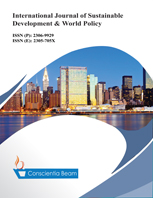Assessing the Value of Different Utilized Attributes on Residents’ Behavior and Preferences for Proposed E-Waste Recycling Services
DOI:
https://doi.org/10.18488/26.v11i1.3001Abstract
Inappropriate e-waste management is a matter of deep concern that requires an urgent and international response involving stakeholders at different levels. As each resident is a key link in a chain associated with e-waste recycling strategies, it is crucial to understand the utmost important attributes affecting residents’ behavior and preferences for proposed e-waste recycling services. This study attempts to identify the level of the importance of different utilized attributes using a Vietnamese sample. Data collected from 538 residents were subjected to descriptive analysis and factor analysis to assess the level of importance and factorial structure of the selected attributes. It is found that attributes pertaining to law compliance and the trust in the effectiveness of e-waste recycling organizations, environmental conservation, and recycling consulting services are the most important aspects, followed by the convenience of the collection services and economic benefits. Factor analysis suggests a two-factor model, in which the first one relates to the environmental consciousness and responsibility while the second one concerns the utility. These findings support the scientific community and environmental managers with a valid and reliable reference for determining priority levels when designing an effective e-waste recycling scheme, aiming at accelerating the goal of sustainable development and circular economy.

